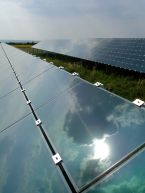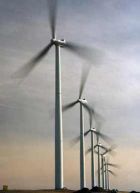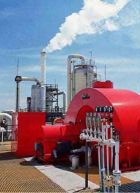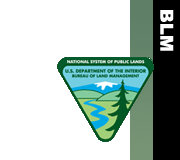|
|
Print Page
|
|
Renewable Energy Resources
|
New Energy for America
 |
 | Solar EnergySolar radiation levels in the Southwest are some of the best in the world, and the BLM manages over 20 million acres of public lands with solar potential. The BLM has received a large number of utility-scale solar energy right-of-way applications, mainly in California, Nevada, and Arizona. In 2010, the BLM approved the first utility-scale solar energy projects on public lands. To date, it has approved 11 projects that include all of the solar energy technologies considered to be commercially viable (parabolic trough, power tower, dish engine, and photovoltaic systems). These 11 projects have the potential to generate 4,512 megawatts of clean, renewable energy - enough energy to power roughly 1.3 million homes. The projects range in size from a 45-megawatt photovoltaic system on 422 acres to a 1,000-megawatt parabolic trough system on 7,025 acres. In 2011 and 2012, the BLM also approved rights-of-way for electric transmission lines on public lands that will enable the construction of six additional projects on private and Tribal land. Those projects will generate another 1,475 megawatts. |  | Wind EnergyThe BLM manages 20.6 million acres of public lands with wind potential. The BLM’s Lands and Realty Management program has authorized 32 wind energy development projects with a current total installed capacity of 581 megawatts, enough to supply the power needs of over 175,000 homes. In addition, the BLM has approved 170 wind energy site testing authorizations. |  | Geothermal EnergyThe BLM has the delegated authority for leasing 245 million acres of public lands (including 104 million acres of National Forest managed by the U.S. Forest Service) with geothermal potential in 11 western States and Alaska. The BLM presently manages 818 geothermal leases, with 59 geothermal leases in producing status generating about 1,275 megawatts of installed geothermal energy on public lands. This amounts to over 40 percent of U.S. geothermal energy capacity and supplies the electrical needs of about 1.2 million homes. |  | Biomass and BioenergyBLM manages approximately 69 million acres of forests and woodlands. About 16 million acres need restoration. The BLM is increasing the use of small-diameter material from forestry, fuels and rangeland treatments. The demand for biomass is expected to increase as bioenergy facilities come on-line to produce heat, fuel, or electricity. |  | Energy Transmission CorridorsThe Programmatic Environmental Impact Statement identifies energy corridors to facilitate future siting of renewable energy development projects, as well as oil, gas, and hydrogen pipelines. Energy transport corridors are agency-preferred locations where pipelines and transmission lines may be sited and built in the future to meet the region’s increasing energy demands while mitigating potential harmful effects to the environment. Once designated as a Corridor, individual pipelines and tranmission lines within the Corridor are sited by processing of a right-of-way application |
Active Priority Renewable Energy ProjectsThe BLM is currently processing 23 renewable energy projects (14 solar, 6 wind, and 3 geothermal) representing about 5,300 MW. The BLM identified these projects for processing through collaboration that emphasizes early consultation with the Bureau of Indian Affairs, the U.S. Fish and Wildlife Service, the National Park Service, and, in the case of geothermal projects on forest lands, with the U.S. Forest Service. The projects were selected based on the screening criteria outlined in BLM policy memoranda issued in February 2011. BLM Education ProgramsBLM State Renewable Energy LinksOther Resources
 |
|
|
|
|











